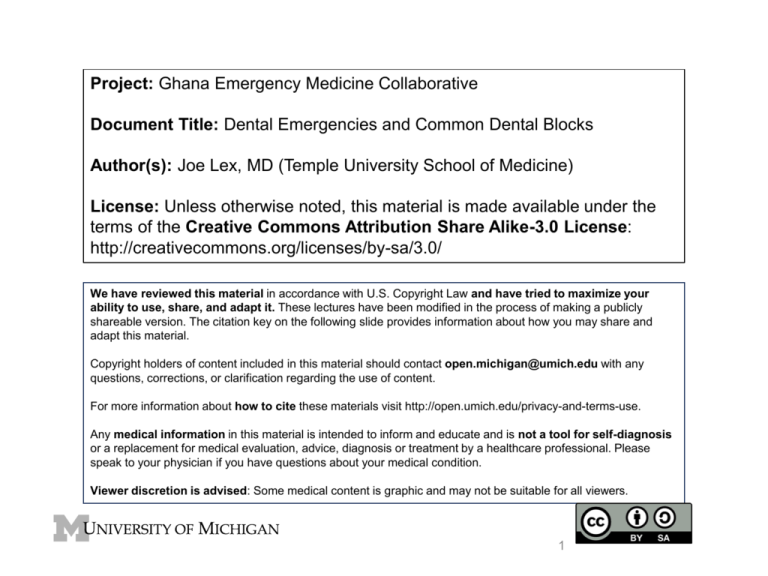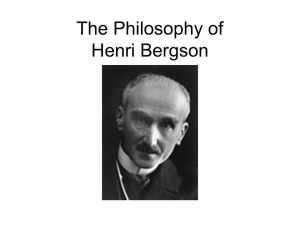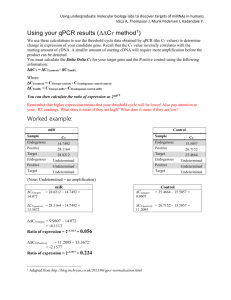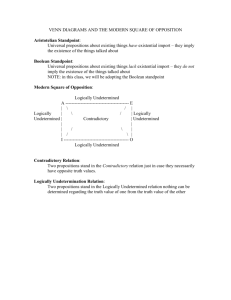ppt - Open.Michigan
advertisement

Project: Ghana Emergency Medicine Collaborative
Document Title: Dental Emergencies and Common Dental Blocks
Author(s): Joe Lex, MD (Temple University School of Medicine)
License: Unless otherwise noted, this material is made available under the
terms of the Creative Commons Attribution Share Alike-3.0 License:
http://creativecommons.org/licenses/by-sa/3.0/
We have reviewed this material in accordance with U.S. Copyright Law and have tried to maximize your
ability to use, share, and adapt it. These lectures have been modified in the process of making a publicly
shareable version. The citation key on the following slide provides information about how you may share and
adapt this material.
Copyright holders of content included in this material should contact open.michigan@umich.edu with any
questions, corrections, or clarification regarding the use of content.
For more information about how to cite these materials visit http://open.umich.edu/privacy-and-terms-use.
Any medical information in this material is intended to inform and educate and is not a tool for self-diagnosis
or a replacement for medical evaluation, advice, diagnosis or treatment by a healthcare professional. Please
speak to your physician if you have questions about your medical condition.
Viewer discretion is advised: Some medical content is graphic and may not be suitable for all viewers.
1
Attribution Key
for more information see: http://open.umich.edu/wiki/AttributionPolicy
Use + Share + Adapt
{ Content the copyright holder, author, or law permits you to use, share and adapt. }
Public Domain – Government: Works that are produced by the U.S. Government. (17 USC § 105)
Public Domain – Expired: Works that are no longer protected due to an expired copyright term.
Public Domain – Self Dedicated: Works that a copyright holder has dedicated to the public domain.
Creative Commons – Zero Waiver
Creative Commons – Attribution License
Creative Commons – Attribution Share Alike License
Creative Commons – Attribution Noncommercial License
Creative Commons – Attribution Noncommercial Share Alike License
GNU – Free Documentation License
Make Your Own Assessment
{ Content Open.Michigan believes can be used, shared, and adapted because it is ineligible for copyright. }
Public Domain – Ineligible: Works that are ineligible for copyright protection in the U.S. (17 USC § 102(b)) *laws in
your jurisdiction may differ
{ Content Open.Michigan has used under a Fair Use determination. }
Fair Use: Use of works that is determined to be Fair consistent with the U.S. Copyright Act. (17 USC § 107) *laws in your
jurisdiction may differ
Our determination DOES NOT mean that all uses of this 3rd-party content are Fair Uses and we DO NOT guarantee that
your use of the content is Fair.
2
To use this content you should do your own independent analysis to determine whether or not your use will be Fair.
Dental Emergencies and
Common Dental Blocks
Joe Lex, MD, FACEP, MAAEM
Associate Professor, Department of
Emergency Medicine
Temple University School of Medicine
Philadelphia, PA
3
Disclosure
No conflicts
of interest
4
Objectives
1. Understand that teething does
not cause fever
2. Define, recognize, and treat
pericoronitis, periapical abscess,
and alveolar osteitis
3. Describe treatment for ANUG
4. State three ways to treat bleeding
gums
5
Teeth
Vlad2i (Wikimedia Commons)
6
How Many Teeth?
32 permanent
• 8 incisors
• 4 canines
(cuspids)
• 8 premolars
(bicuspids)
• 12 molars
(tricuspids)
20 primary or
deciduous
• 8 incisors
• 4 canines
• 8 molars
7
How to Name the Teeth
8
Gray's Anatomy (Wikipedia)
How to Number the Teeth
9
Permanent Teeth
Permanent maxillary
Right first molar
Permanent maxillary
Left second premolar
Permanent mandibular
right third molar
Permanent mandibular
left canine
Kaligula (Wikipedia)
11
Definitions
• Interproximal: surfaces between
two adjacent teeth
• Mesial: interproximal surface
facing toward midline
• Distal: interproximal surface
facing away from midline
• Occlusal: chewing surface
12
Definitions
• Labial: toward the lips, specific to
anterior teeth
• Buccal: toward the cheek, specific
to posterior teeth
• Palatal: toward the palate, specific
to maxillary teeth
• Lingual: toward the tongue,
specific to mandibular teeth
13
Definitions
• Apical: toward the tip of the root
of the tooth
• Radicular: associated with the
root, especially the apical region
• Coronal: toward the crown of the
tooth
• Incisal: toward the biting edge of
incisors
14
Basic Anatomy
• Dentin surrounds pulp, which is
neurovascular supply
• Crown: enamel on dentin, visible
portion of tooth
• Root: cementum on dentin,
extends into the alveolar bone
15
Sam Fentress (Wikipedia)
16
Basic Anatomy
• Periodontium = attachment
apparatus
• Periodontal ligament = collagen
fibers that extend from alveolar
bone to root of tooth
• Gingivitis and periodontal disease
destroy peridontium tooth
mobility and loss
17
Basic Anatomy
• Gingiva = keratinized stratified
squamous epithelium
– Free gingiva: 2- to 3- mm-deep
gingival sulcus in disease-free state
– Attached gingiva: adheres to
alveolar bone and extends to oral
vestibule, floor of mouth
• Nonkeratinized alveolar mucosa
covers cheeks, lips, floor of mouth
18
Dozenist (Wikipedia)
Healthy teeth
19
Source Undetermined
Healthy teeth
20
Teething
ratterrell (Flickr)
Mathowie (Flickr)
21
Thomas Phayre – 1530
The Boke of Children, London
About ye seveth moneth, sometime more,
sometime lesse, after ye byrth, it is natural
for a child to breed teeth, in which time
many one is sore vexed with sondry
diseases and pains, as swelling of ye
gummes and jaws, unquiet crying fevers,
cramps, palsies, fluxes, reumes and other
infirmities, specially when it is long or ye
teeth come forth, for the sooner they appear
the better and the more ease it is to the childe.
22
Death by Teething!!
• Common “Cause of Death” in
Middle Ages
• Usually weaned at same time
• Frequently lance erupting tooth
• Malnutrition from watered-down
milk
• Typhus from infected milk
23
Teething
• No data support association of
teething, fever, and diarrhea
• Possible mild dehydration from
excessive salivary production or
decreased intake
• Must seek other source
for fever, diarrhea
24
Teething
Capital M (Flickr)
25
Teething
Boston Public Library (Flickr)
26
Toothache
27
Impacted Wisdom Teeth
Source Undetermined
28
Wisdom Teeth
•
•
•
•
Vestigial third molars
Used to help grind down plants
Diets changed smaller jaw
Agenesis ranges from practically
zero in Tasmanian Aborigines to
~100% in indigenous Mexicans
• Related to PAX9 gene
29
Pain from Wisdom Teeth
• Pericoronitis: inflammation of
gingival tissue overlying occlusal
surface of erupting tooth
(operculum)
• Masseter irritation trismus
• Rx irrigate debris, analgesia,
dental referral
30
Operculum = lid
Pericoronitis
Source Undetermined
31
Pericoronitis
Source Undetermined
32
Dental Caries
• Loss of tooth enamel integrity due
to exposure to acidic metabolic
byproducts of plaque bacteria
• Early: sensitive to cold or sweet
• Later: direct communication with
dental pulp “pulpitis”
• Irreversible pulpitis: protracted
pain
33
Dental Caries
Source Undetermined
34
Dental Caries
35
Source Undetermined
Antibiotics for Toothache??
• Undifferentiated dental pain
without overt infection
• Penicillin vs. placebo
• Evaluation at enrollment, again at
5- to 7-day follow-up
• Outcome measure: overt dental
infection at follow-up
Acad Emerg Med. 2004 Dec;11(12):1268-71.
36
Antibiotics for Toothache??
• 13 / 134 patients (9%) developed
infection
– 6/64 (9%) in penicillin group
– 7/70 (10%) in placebo group
• No significant difference in
baseline characteristics,
compliance, VAS pain scores
Acad Emerg Med. 2004 Dec;11(12):1268-71.37
Antibiotics for Toothache??
• CONCLUSIONS: “These data
support the hypothesis that
penicillin is neither necessary nor
beneficial in the treatment of
undifferentiated dental pain in the
absence of overt infection.”
Acad Emerg Med. 2004 Dec;11(12):1268-71.38
Periapical Abscess
• Most common source of severe
odontogenic pain: periapical
• Most common lesion: periapical
granuloma = periradicular
periodontitis, results from pulpitis
• X-ray widened periodontal
ligament space (radiolucent stripe)
39
Widened periodontal
ligament space
Source Undetermined
40
Periapical lucency
41
Source Undetermined
Periapical abscess
Source Undetermined
42
Periapical Abscess
•
•
•
•
Exquisite pain with percussion
Suppurative periodontitis = parulis
X-rays rarely indicated
Rx antibiotic (penicillin still best),
analgesia, referral
• Definitive treatment: extraction or
root canal
43
Parulis = Fistula = Gum Boil
Source Undetermined
44
Parulis = Fistula
Source Undetermined
45
Postextraction Pain
• Periosteitis: 24 to 48 hours,
common, easily treated
• Alveolar osteitis = dry socket:
second or third post-op day
exquisite oral pain due to bone
exposed to oral environment
46
Dry Socket
Source Undetermined
47
Dry Socket
• Up to 35% after impacted 3rd
molar removal
• X-ray for retained root tip
• Irrigate socket with sterile saline
• Pack socket with gauze soaked in
oil of cloves or eugenol
• Relief is immediate
• Antibiotic if severe
48
www.nysora.com/techniques/oral_maxilla/
49
Upper Incisors & Canines
• Innervated by superior alveolar
nn, branches of infraorbital n.
• Anastamose over midline
• Nasopalatine innervates palatal
gingiva, mucosa, periosteum
• Maxillary bone has porous lamina
50
Upper Incisors & Canines
Dozenist (Wikipedia)
51
Upper Incisors & Canines
• Anesthetized by buccal fold
infiltration
• Introduce near bone, inject
adjacent to tooth
• Slow injection 1 – 2 ml solution
• Central incisors: avoid nasal spine
52
Upper Incisors & Canines
Source Undetermined
53
Infraorbital Nerve Block
Infraorbital N.
Area of Anesthesia
Barry Langdon- Lassagne (Wikimedia Commons)
55
Infraorbital Nerve Block
Source Undetermined
57
Upper Premolars
• Convergent branches of superior,
posterior, and anterior alveolar
nerves superior dental plexus
• Greater palatine nerve palate
• Both irregular, may vary from
person to person
59
Upper Premolars
• Infiltrate buccal
fold next to
tooth
• 1.0 – 1.5 ml at
apex
Source Undetermined
62
Supplemental Palate Injection
• Use small
volume (~0.5
ml) – hurts
like crazy
Source Undetermined
63
Palatal Nerve Block
Source Undetermined
64
Upper Molars
Source Undetermined
69
Upper Molars
• Buccal infiltration: puncture mesial
fold close to tooth
• Advance upward and backward
until bone felt
• Inject 1 – 2 ml solution
70
Upper Molars
Source Undetermined
71
So for most upper teeth…
Local infiltration
is sufficient
73
Lower Incisors & Canines
Source Undetermined
75
Lower Incisors & Canines
• Innervated by incisive nerve
• Lies within bone, but can be
anesthetized by diffusion through
thin, porous mandibular bone
lamina
• Tip of needle must contact bone in
lower front
77
Lower Incisors & Canines
• Buccal soft tissue:
mental nerve
• Lingual gingiva &
periosteum: sublingual
nerve
78
Lower Incisor Block
• Patient supine
• Inject through
buccal fold near
tooth
79
Lower Premolars
• Local blocks don’t work
• Primarily inferior alveolar nerve
• Premolar buccal gingiva buccal
nerve
• Lingual gingiva sublingual
nerve
• Mental foramen: below and
between premolar apices
81
Mental Nerve Block
Area of Anesthesia
Nerve Block
Barry Langdon- Lassagne (Wikimedia Commons)
82
Mental Nerve Block
84
Source Undetermined
Supplementary Lingual Nerve Block
Source Undetermined
• Use 0.5 – 1 mL
85
Lower Molars
• Apices embedded in thick
compact bone
• Local blocks don't work
• Inferior alveolar nerve
87
Inferior Alveolar Nerve Block
Source: NYSORA.com
91
Inferior Alveolar Nerve Block
Source: NYSORA.com
92
Inferior Alveolar Nerve Block
Source Undetermined
93
Facial Landmarks
Gray's Anatomy (Wikipedia)
95
www.nysora.com/techniques/oral_maxilla/
96
Frenum Diastema
i.e., gap-toothed
Source Undetermined
97
Tetracycline Staining
Source Undetermined
98
Gums
99
Source Undetermined
Periodontal Disease
• Gingivitis: accumulation of plaque
along gum margins
• Causes: bad hygiene, hormonal
variations (puberty, pregnancy),
medications (phenytoin), etc.
• Sulcus deepens pockets
periodontitis mineralization
bone loss tooth loss
100
Periodontal Disease
101
Source Undetermined
Periodontal Disease
Source Undetermined
102
ANUG
• Acute Necrotizing Ulcerative
Gingivitis = Vincent ´s disease =
trench mouth
• Diagnostic triad: pain + ulcerated
or “punched out” interdental
papillae + gingival bleeding
• Etiology unclear, but opportunistic
• Anaerobes always present
103
ANUG
• Invades otherwise healthy tissue
• Treatment:
– Identify, treat predisposing factors
– Chlorhexidine oral rinses twice daily
– Debridement and scaling by dentist
– Metronidazole 250 mg tid
– Supportive therapy: soft diet rich in
protein and vitamins
104
ANUG
Source Undetermined
105
ANUG
Source Undetermined
106
ANUG
Source Undetermined
107
Gingival Hyperplasia
• Associated with many commonly
used medications
• 50% of patients on chronic
phenytoin
• Also calcium channel blockers
(especially nifedipine) and
cyclosporine.
• Treatment: fastidious oral hygiene
108
Gingival Hyperplasia
Source Undetermined
109
Bleeding Gums
• Hemorrhage after scaling easily
controlled with peroxide mouth
rinses or direct gingival pressure
• Clotting factor deficiencies,
leukemia, and end- stage liver
disease may first present as
spontaneous gingival hemorrhage
• Treatment: based on cause
110
Bleeding Gums
Source Undetermined
111
Bleeding Gums
Source Undetermined
112
Post-Extraction Bleeding
Usually a dislodged clot
1. Firm pressure usually adequate:
folded 2 × 2 gauze pad placed over
extraction site, then firm pressure by
clenching teeth for 20 minutes
2. Tea bag: tannic acid is hemostatic
3. Gel-Foam, Avitene, or Instat sutured
snugly into socket
4. Infiltrate lidocaine with epinephrine
113
Pyogenic Granuloma
• “Pregnancy tumor”
• Benign proliferation of connective
tissue, primarily on gingiva
• Not pyogenic, not a granuloma
• Usually recurs if removed during
pregnancy
• If not regressed 2 to 3 months
postpartum, definitive removal
114
Pyogenic Granuloma
Source Undetermined
Source Undetermined
115
Pyogenic Granuloma
Source Undetermined
116
I got a tooth knocked out
msspider66 (Wikimedia Commons)
117
I got a tooth knocked out
• Rinse with water; do not scrub
• Hold gently by crown, not root
• In cooperative adult, gently put
back in socket
• Transport tooth to doctor or dentist
in saline, milk, or saliva
– Dry tooth will damage in minutes
118
I got a tooth knocked out
• Child, uncooperative adult: "tooth
saver" solution
• Loosened, pushed in, broken
teeth: avoid eating or drinking
• Tooth broken in pieces: retrieve
parts and transport in suggested
solutions as above
119
I got a tooth knocked out
• 90% of replantations performed
within 30 minutes are successful
• If wait 2 hours, falls to 5%
• Insert slowly into socket, hold
pressure for 10 to 15 minutes
– If forced abruptly, will be extruded
• Consult dentist
Lind GL. Anesth Analg
61(5):469, May 1982
120
I got a tooth knocked out
• Stabilization with arch bars and
wires for two weeks
• If primary (baby) tooth, no longterm problems anticipated
– Primary tooth: blue-white
– Permanent tooth: yellow-white
– No reimplantation if primary
121
I got smacked in the mouth
• Remove debris, especially tooth or
denture fragments
• Irrigate copiously
• Avoid radical debridement
• Can close up to 24o after injury
• Penicillin (or erythromycin) for
through and through, but no
studies
Potter BC. Amer Fam Phys
18(5):96,1978
122
I got smacked in the mouth
• Tongue cuts:
rarely need
repair
Source Undetermined
Potter BC. Amer Fam Phys
18(5):96,1978
123
I got smacked in the mouth
• Cheek / lip cuts:
close to prevent
food entrapped
Source Undetermined
• Frenulum cut: let
heal on own
Source Undetermined
124
And finally…
Two Flossing Haiku
Intentional pain
And the taste of gums bleeding
Prevent toothlessness
Morsels sit between my teeth
Minty, waxy nylon thread
Saves my smile
125







